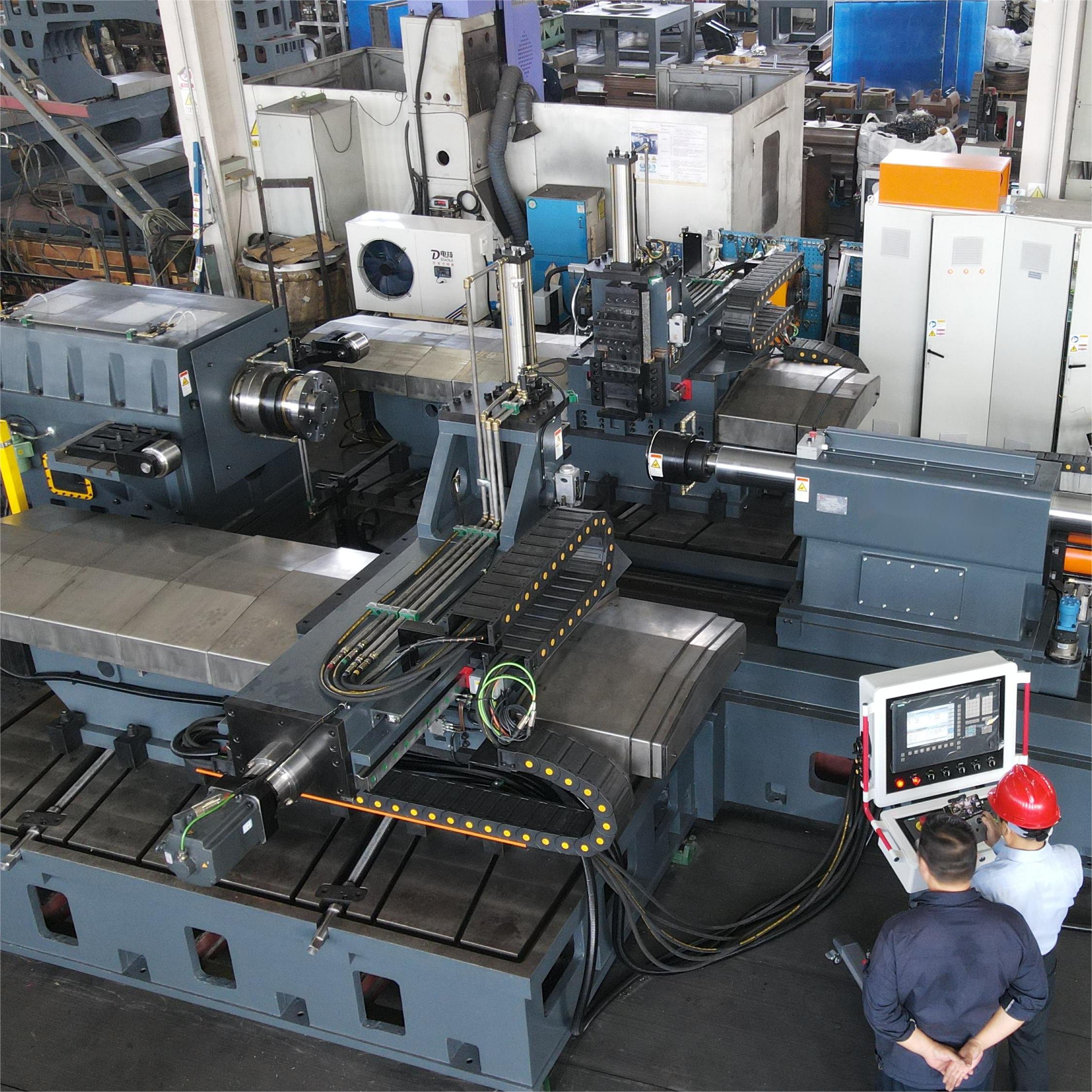
Titanium Alloy Metal Spinning
Altron’s Titanium metal spinning offers many advantages over other types of metal forming—one of them being the ability to work with varying materials, including exotic metals and alloys. Results are seamless, uniform, and strong—strong enough to withstand whatever the application demands.
Titanium alloys have long been favored for their exceptional strength-to-weight ratio and corrosion resistance, making them indispensable in industries ranging from aerospace to medical. Among the various techniques for shaping titanium alloys, metal spinning stands out for its ability to produce intricate and seamless shapes with minimal material wastage. In recent years, the advent of advanced materials like Altron has further enhanced the capabilities of metal spinning in working with titanium alloys.

Material Specifics
Titanium offers many of the same characteristics of aluminum, including a good strength-to-weight ratio, low density, and high corrosion resistance. Many titanium alloys are used in metal forming processes, typically aluminum and vanadium; it is more common to use these titanium alloys than to use pure titanium.
Material Characteristics
Much like aluminum, titanium alloys are lightweight and corrosion resistant, as well as low in density; however, they offer superior strength to aluminum. The tensile strength of titanium alloys can also be better than that of steel materials, though it is more expensive than steel—making it useful when all of its characteristics are needed. Titanium alloys are often used for aerospace parts, due to their high durability and lighter weight.
Grade 2 Titanium
Grade 2 titanium—which is among the most popular and versatile grades—is distinguished from other titanium grades by its higher levels of iron and oxygen. This unique composition yields moderate strength and excellent corrosion resistance, despite the material’s light weight and low density.
As such, Grade 2 titanium is desirable for aerospace applications and certain medical devices, which carry stringent weight restrictions. Grade 2 titanium is also ideal for many applications where weight is not an issue. The material’s combination of corrosion resistance and strength makes it a strong choice for chemical processing, oil and gas, and marine applications, including vessels, tubing, and liners. Contributing to this mass appeal is Grade 2’s ability to tolerate continuous exposure to temperatures in the range of 800–1000° F.
Grade 2’s can readily be cold or hot formed, machined, and welded without the need for pre- or post-heat treatment. This grade is also distinguished from others because of its high ductility (which facilitates cold forming) and its excellent weldability. Helander has significant experience working with Grade 2 titanium for a broad range of applications.
Grade 5 Titanium
Grade 5 titanium—also known as Grade 64 titanium or Ti-6AL-4V—is an alloy composed of 6% aluminum, 4% vanadium, and approximately 90% titanium, with maximum iron and oxygen contents of 0.25% and 0.2%, respectively. The inclusion of aluminum and vanadium makes the alloy much stronger than unalloyed titanium while retaining favorable thermal properties. Like other grades, Ti-6AL-4V resists prolonged temperatures in the range of 600-800° F.
It has excellent tensile and shear strength despite its light weight, and it can be heat treated to further enhance these qualities. This formidable combination of physical properties makes Grade 5 the most popular type of titanium available, with applications ranging from turbine engine components to sports equipment. It is most commonly used in the aerospace, marine, chemical processing, and energy sectors, although it is extremely versatile by nature. Although Grade 23 titanium is slightly more popular for medical applications, Grade 5 is still preferred in certain cases since it tends to mimic human bone better than other implant materials.
Despite its superior physical properties and high commercial availability, Grade 5 titanium does carry some limitations in terms of workability. Although it can be welded and fabricated, special care needs to be taken with either of these processes to prevent damage to the metal. Other grades may be more cost-effective depending on the desired fabrication. With our capabilities, tools, and expertise, the Helander team is fully equipped to work with Grade 5 titanium.
Metal Spinning and Titanium
Titanium alloys can be used to produce high quality parts through metal spinning, offering the distinct advantages of their material characteristics and of the process itself.
Metal spinning titanium differs from spinning other metals, as higher temperatures are required to properly work the material. Titanium has limited elongation, but increasing the temperature will also increase its elongation. Due to these challenges, it is necessary to enlist a metal spinner who is experienced in working with this unique material.
Titanium Alloy Metal Spinning Case

















Altron’s Application in Titanium Alloy metal Spinning
Applications in Aerospace and Beyond
The aerospace industry, in particular, stands to benefit significantly from the application of Altron in metal spinning. Components such as engine housings, ducts, and structural panels can be efficiently manufactured using this advanced titanium alloy, offering weight savings and improved performance in demanding operating environments.
Beyond aerospace, Altron’s versatility opens up possibilities in automotive, medical, and other high-tech sectors where lightweight yet durable materials are prized.
Advantages of Altron in Metal Spinning
The application of Altron in metal spinning offers several distinct advantages over traditional titanium alloys. Firstly, its enhanced formability facilitates the creation of complex shapes with tighter tolerances, thereby expanding the design possibilities for engineers and designers. Moreover, Altron’s improved strength allows for thinner wall thicknesses without compromising structural integrity, resulting in lighter and more efficient components.
Process Considerations
Metal spinning, also known as spin forming or spin forging, involves rotating a metal disc or tube against a mandrel while applying pressure to gradually shape it into a desired form. When working with Altron, certain process considerations come into play due to its unique material properties. For instance, precise control over temperature and pressure is essential to prevent work hardening and ensure uniform deformation throughout the spinning process.
Spinning Tooling and Equipment
The tooling and equipment used in metal spinning must be carefully selected and configured to accommodate the specific characteristics of Altron. Hardened steel tools with polished surfaces are typically preferred to minimize friction and prevent galling during forming. Additionally, specialized mandrels and spinning machines equipped with variable speed control and automated feedback systems can optimize the process parameters for working with Altron.
Surface Finish and Quality Assurance
Achieving the desired surface finish is crucial in applications where aesthetics and performance are paramount. Altron’s propensity for oxide formation during forming necessitates meticulous surface preparation techniques, such as chemical etching or mechanical polishing, to ensure a pristine finish. Furthermore, rigorous quality assurance measures, including dimensional inspection and material testing, are essential to guarantee the integrity and performance of the spun components.
Altron Summary Titanium Alloy Metal Spinning
Altron’s application in titanium alloy metal spinning represents a significant advancement in materials science and manufacturing technology. By harnessing the unique properties of this advanced alloy, engineers and manufacturers can unlock new possibilities for designing lightweight, high-performance components across a range of industries. As research continues and techniques evolve, the synergy between Altron and metal spinning is poised to revolutionize the way we fabricate titanium-based products in the years to come.





